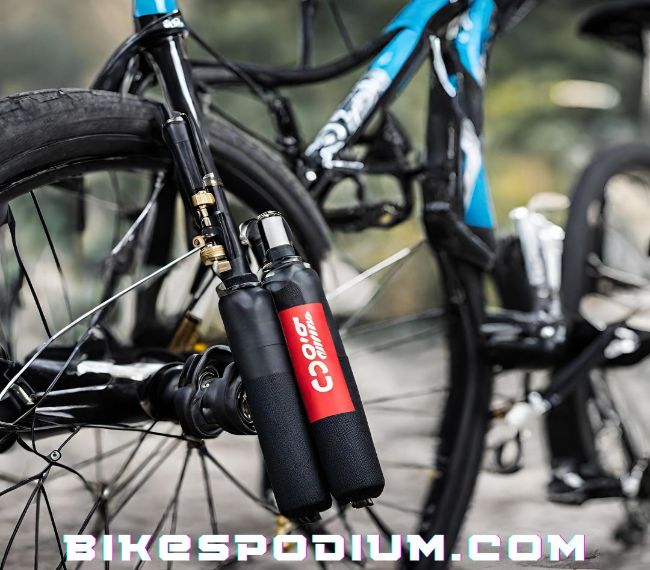
In today’s fast-paced world, having a reliable and efficient way to inflate your tires is essential. One of the most popular options available on the market is CO2 tire inflators. These innovative devices are designed to quickly and conveniently inflate your tires using compressed carbon dioxide gas. In this article, we will explore the ins and outs of CO2 tire inflators, how they work, their benefits, and potential drawbacks.
How do CO2 Tire Inflators Work?
CO2 tire inflators are compact and portable devices that utilize small cartridges filled with compressed carbon dioxide gas. They are compatible with a wide range of tire valves, including Presta and Schrader valves commonly found in bicycles, motorcycles, and even car tires. These inflators work by attaching the cartridge to the valve and releasing the gas into the tire, instantly inflating it to the desired pressure.
The inflator typically consists of a valve head with a control lever, a cartridge holder, and a nozzle. When the control lever is engaged, the gas is released from the cartridge and flows through the nozzle, filling the tire. Some inflators come with additional features such as pressure gauges, which allow you to monitor and control the inflation process accurately.
CO2 tire inflators offer several benefits that make them a popular choice among cyclists and motorists:
The Benefits of CO2 Tire Inflators
- Portability and Convenience: One of the main advantages of CO2 tire inflators is their compact size and portability. They are lightweight and easy to carry, making them ideal for cyclists or motorists on the go. Unlike traditional hand or foot pumps, CO2 inflators do not require manual effort, saving you time and energy.
- Quick Inflation: CO2 inflators provide rapid inflation, allowing you to get back on the road quickly. The high-pressure gas inflates the tire within seconds, ensuring minimal downtime in case of emergencies or regular maintenance.
- Ease of Use: These inflators are incredibly user-friendly, even for beginners. With a simple attachment to the tire valve and a press of the lever, you can achieve the desired pressure effortlessly. Their straightforward design makes them suitable for all skill levels.
- Versatility: CO2 tire inflators are not limited to specific types of tires. They work well with various vehicles, including bicycles, motorcycles, and even cars. This versatility makes them a practical choice for multi-purpose use.
- Space-Saving: Traditional hand or foot pumps can be bulky and take up valuable space in your vehicle or backpack. CO2 inflators, on the other hand, are compact and can be easily stored in a small bag or even attached to your bike frame, ensuring you have more room for other essentials.
While CO2 tire inflators offer many advantages, it’s essential to consider a few potential drawbacks before making a purchase decision:
Considerations and Potential Drawbacks
- Single-Use Cartridges: Most CO2 inflators use single-use cartridges that need to be replaced after each use. This can become costly over time, especially if you frequently need to inflate your tires. However, some manufacturers offer refillable cartridges, which can help reduce ongoing expenses.
- Limited Inflation Capacity: CO2 cartridges typically have a limited inflation capacity compared to traditional pumps. Depending on the size of the cartridge and the tire’s volume, you may need multiple cartridges to fully inflate a large tire. It’s crucial to carry spare cartridges to ensure you have enough gas for longer rides or emergencies.
- Environmental Impact: As with any product that uses disposable cartridges, there is an environmental impact to consider. The empty cartridges should be properly disposed of or recycled to minimize their impact on the environment.
In conclusion, CO2 tire inflators provide a portable, convenient, and efficient solution for inflating tires on the go. Their compact size, quick inflation capability, and ease of use make them a popular choice among cyclists, motorists, and outdoor enthusiasts. However, it’s important to weigh the benefits against the potential drawbacks such as ongoing cost, limited inflation capacity, and environmental impact.
When considering a CO2 tire inflator, it’s recommended to research different brands and models to find the one that best suits your needs. Look for features like pressure gauges, compatibility with different valves, and the availability of refillable cartridges to enhance your overall experience.
Investing in a high-quality CO2 tire inflator can be a game-changer, ensuring that you never have to worry about deflated tires disrupting your adventures or daily commutes again.
FAQ
1. How do CO2 tire inflators work?
CO2 tire inflators work by attaching a cartridge filled with compressed carbon dioxide gas to the tire valve and releasing the gas into the tire, instantly inflating it to the desired pressure.
2. What are the benefits of CO2 tire inflators?
The benefits of CO2 tire inflators include portability and convenience, quick inflation, ease of use, versatility for different types of tires, and space-saving design.
3. What are the potential drawbacks of CO2 tire inflators?
The potential drawbacks of CO2 tire inflators include the use of single-use cartridges that need to be replaced after each use, limited inflation capacity compared to traditional pumps, and the environmental impact of disposable cartridges.
4. What should I consider when purchasing a CO2 tire inflator?
When purchasing a CO2 tire inflator, it is recommended to consider different brands and models to find one that suits your needs. Look for features like pressure gauges, compatibility with different valves, and the availability of refillable cartridges to enhance your overall experience.



